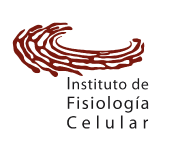Tissue-specific differences in Ca2+ sensitivity of the mitochondrial permeability transition pore (PTP). Experiments in male rat liver and heart.
Ricardez?Garcia, C., Reyes?Becerril, M., Mosqueda?Martinez, E., Mendez?Romero, O., Ruiz?Ramírez, A., & Uribe?Carvajal, S. (2024). Tissue?specific differences in Ca2+ sensitivity of the mitochondrial permeability transition pore (PTP). Experiments in male rat liver and heart. Physiological Reports, 12(10). Portico. https://doi.org/10.14814/phy2.16056
Permeability transition pore (PTP) opening dissipates ion and electron gradients across the internal mitochondrial membrane (IMM), including excess Ca2+ in the mitochondrial matrix. After opening, immediate PTP closure must follow to prevent outer membrane disruption, loss of cytochrome c, and eventual apoptosis. Flickering, defined as the rapid alternative opening/closing of PTP, has been reported in heart, which undergoes frequent, large variations in Ca2+. In contrast, in tissues that undergo depolarization events less often, such as the liver, PTP would not need to be as dynamic and thus these tissues would not be as resistant to stress. To evaluate this idea, it was decided to follow the reversibility of the permeability transition (PT) in isolated murine mitochondria from two different tissues: the very dynamic heart, and the liver, which suffers depolarizations less frequently. It was observed that in heart mitochondria PT remained reversible for longer periods and at higher Ca2+ loads than in liver mitochondria. In all cases, Ca2+ uptake was inhibited by ruthenium red and PT was delayed by Cyclosporine A. Characterization of this phenomenon included measuring the rate of oxygen consumption, organelle swelling and Ca2+ uptake and retention. Results strongly suggest that there are tissue-specific differences in PTP physiology, as it resists many more Ca2+ additions before opening in a highly active organ such as the heart than in an organ that seldom suffers Ca2+ loading, such as the liver.



